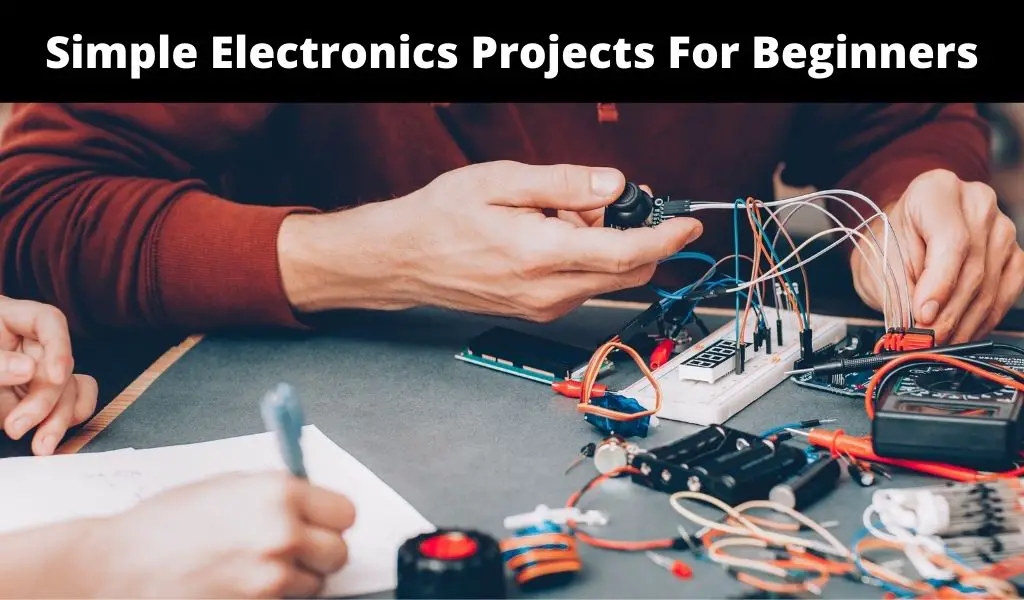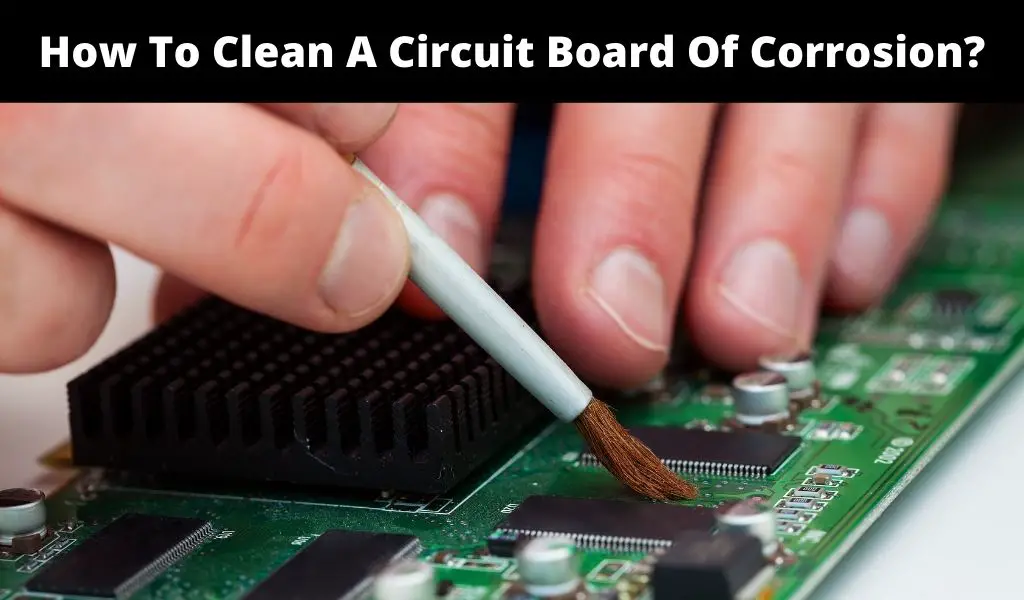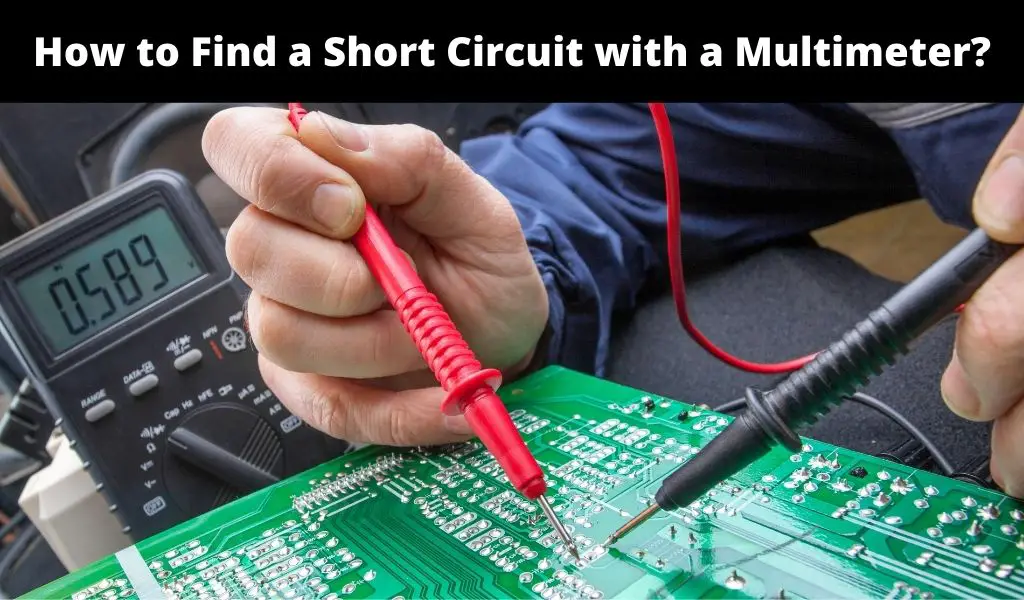If you are a hobbyist interested in simple electronics projects, this article is for you. We understand that complex projects are overwhelming for beginners, and that is why we are going to focus on projects that require easily available components. No matter how inexperienced you are, you can work on these simple and interesting projects.
8 Simple Electronics Projects for Beginners
- Battery voltage monitor.
- Electronic thermometer.
- Automatic street light control.
- Electronic dice.
- Fire alarm circuit.
- Electronic motor controller.
- Mobile incoming call indicator.
- Crystal tester.
1. Battery voltage monitor
With this electronic project, the charging and discharging of a battery can be monitored. The purpose is to make sure that the battery voltage does not go beyond the specific limit. If you are looking for some simple electronics projects for beginners, we encourage you to try this one. It is in essence a charger that controls the level of charging. It allows you to know the level of charge.
Components
- 5 resistors ( 1K Ohms, 10K Ohms, 18K Ohms, 680 Ohms, 680 Ohms)
- S1 (SPST switch)
- Diode (IN4003)
- Battery (12V)
- LED1 and LED2 (Green and Red)
Circuit connections
You need an operational amplifier IC to implement the circuit. It should be designed to monitor the voltage of the battery. The IC (LM709) will work as a comparator. The status of charging is indicated by a bi color LED. The divider is essentially a combination of a potentiometer and a resistor.
The potential divider receives its voltage from the inverting input. The current is limited by R1 and R2.
Operation
A 12V battery powers the electronic circuit. It starts working when the battery voltage reaches 13.5 volts. It causes a difference in voltage between the inverting and non-inverting units. And as a result the output voltage goes on. When the battery is overcharged, LED1 emits red light.
On the other hand, when the voltage comes down to 10 volts, the inverting terminal receives less voltage than the non-inverting terminal. It results in higher output. We can see green light coming out of LED2. It indicates that the battery does not have enough charge.
2. Electronic thermometer
With a few components, you can easily design an electronic thermometer. With this thermometer, you can measure the temperature of different things. This thermometer can be as useful as a clinical thermometer, and doctors can use it. If you want to try just a few simple electronics projects for beginners, you should consider this project. It will also strengthen your skills.
Components
- R1: 680 Ohms
- R2, R3, R4, R5: 1KOhms
- R6 :6.7 K Ohms
- R7:10K Ohms
- VR1: 2.3 K Ohms
- VR2, VR3, VR4: 9K Ohms
- C1, C2, C3, C4: 0.1uF, 0.1uF, 10uF, 9uF
- M1: Ammeter
- Diode: IN4148
- OPAMP: uA741
Circuit connection
The circuit requires a DC power supply source, and for this you have to use a 9V battery. For the temperature sensor, use the diode. The operational amplifier, with a feedback path, should be connected to the diode. VR1, R1 and R2 fix the input voltage.
Connect the output from OPAMP IC2 to an ammeter. The current reading will be shown by the ammeter. To show temperature, the reading will be calibrated.
Circuit operation
As the temperature changes across the diode, the voltage also changes. The voltage drop is 0.7V at room temperature. The rate of reduction is 2mV/degree Celsius. The operational amplifier senses this voltage change. The voltage drop determines the output.
To amplify the voltage, you need to use another operational amplifier. IC2, the operational amplifier, amplifies IC1 output. The current amplitude is indicated by the ammeter. It is calibrated in such a way that it can indicate temperature.
3. Automatic street light control
No matter what your experience level is, you can very easily make this circuit. With this circuit, street light can be turned ON or OFF automatically. The mechanism works depending on the intensity of light outside.
If you want to be familiar with some simple electronics projects for beginners, this is one of the best projects to try. It requires only a few simple components.
You need an LDR (Light Dependent Resistor) to work on this project. The resistance is changed according to the intensity of light. Conductivity increases when the light intensity is high. And resistance decreases when the light intensity is low.
When the light intensity is low, the street light is turned ON. And when the light intensity is high, the street light is turned OFF. You need only a few components to work on this project.
Components required
- Resistor 1K -1
- LDR – 1
- Resistor 330 Ohm – 1
- Transistor BC547 – 2
- Diode 1n4007 – 1
- Power Supply 9V
- Relay 5V – 1
How to make it
Attach the components on the PCB. After placing the components, solder them carefully. You can connect the 9 volts input to the input power supply. Connect the high-voltage appliances to the output.
The resistance increases when there is light on the LDR. And the resistance decreases when the LDR is in dark. The transistor helps it trigger the relay and turn on the street light. And when you are done, test the circuit and see whether it works.
4. Electronic dice
There are many simple electronics projects for beginners, and this one is really interesting. With just a few components, you can make an electronic dice. A dice is a popular tool of indoor games.
The main characteristic of a dice is that it must be unbiased. Due to any type of defect or deformation, a dice may get biased. Unlike a physical dice, an electronic dice is always unbiased. You can rely on the reading, because it will always be unbiased and accurate.
Components
- R1, R2, R3: 22K Ohms, 100K Ohms and 2.2K Ohms respectively
- C1, C2: Both 1nF
- Counter (U2): IC4017
- LEDs: Blue LEDs
- Timer (U1): IC555
- Vcc: 5V
Circuit connection
You have to connect a 555 timer in astable mode. Between pins 7 and 8, connect a resistor of 100K. And between pins 6 and 7, connect another resistor of 100K. The counter IC4017 has a clock input pin. Make sure that the output is connected to the pin.
The counter IC’s enable pin is grounded. Connect the output pins to the LED. The counter IC has the reset pin 15. Connect it to the 5th output pin. Use a 9V supply to power the circuit.
Circuit operation
If the capacitor and resistor have proper values, clock pulses will be generated by the 555 timer. The frequency of the pulses will be 4.8 KHz. When you feed the counter with these pulses, according to the pulses, the output pins go high.
For each count, the LEDs glow once. The LEDs switch so fast that the human eye can not perceive the switching. And when the count reaches 7, the counter automatically resets.
5. Fire alarm circuit
If fire breaks out, this electronic circuit will give an alarm. As fire breaks out, ambient temperature increases. This is the principle behind this simple circuit. To give an alarm, this circuit senses and processes the increase in temperature. If you want to learn about only a few simple electronics projects for beginners, you should try this one.
Components
- VR1: 460K Ohms
- R1, R2: 100K Ohms and 1K Ohms
- C1: 2.3uF
- C2: 100uF
- Transistor Q1: BC177
- Transistor Q2: AC128
- Transistor Q3: BC128
- Relay: 9V, SPDT
Circuit connection
As a fire sensor, a PNP transistor has to be used. Then you need to connect it to an NPN transistor base. You have to make a series combination of a resistor and a potentiometer. Connect the emitter of this transistor to another transistor.
Make sure that a relay is connected to the transistor. Across the relay, connect a diode for EMF protection. The load switching is controlled by the relay. It can be a bell or a horn.
Circuit operation
The temperature increases as fire breaks out. As a result, the PNP transistor’s leakage current goes high. Being biased, transistor Q2 starts conducting. In turn, transistor Q3 is brought into conduction.
The emitter and collector terminals are shorted. As a result, current flows to the relay coil. It gets switched on as the coil gets energized. Enthusiasts who want to try only a few simple electronics projects for beginners should try this one.
6. Electronic motor controller
With this electronic circuit you can control the motor. It can be even better than an electromechanically controlling device. If you are dealing with the problems of noise pulses and noise triggering, this circuit can eliminate these problems.
No matter how inexperienced you are, you will find it easy to implement this project. Instead of motor control, we will demonstrate lamp intensity control.
Components
- 12 resistors: 150K Ohms, 33K Ohms, 6.7K Ohms, 100K Ohms, 30K Ohms, 15K Ohms, 10K Ohms, 4.7K Ohms, 4.7K Ohms, 470 Ohms, and 0.5 Ohms
- C1: 1000uF
- C2: 47uF
- C3: 47uF
- AC source: 230V, 50Hz
- Transformer: 230/12V, 500mA
- Lamp(XI): 230V, 100W
Circuit connections
First, connect the secondary transformer to the diodes. The diodes do the rectification while the capacitor filters noise. There is a common emitter mode for these 5 transistors. If there is any fluctuation in the voltage, it will be detected by the transistors Q1, Q2 and Q3.
Transistor Q2 receives the output provided by transistor Q1. Transistor Q3 gets the output of transistor Q2. The same happens to transistor Q4. Transistor Q5 collector must be connected to a relay.
You have to use a 2 CO relay here. Then connect a reverse biased diode to the relay. A current sensor circuit is formed by the network of resistors R11, R11 and VR1.
Circuit operation
There are both complex and simple electronics projects for beginners, and this one is really simple. However, to understand the mechanism properly, you must understand the circuit operation.
If you press the switch SW, the circuit will receive power. Main voltage goes to the transformer, and the voltage gets converted into low voltage. Resistor 8 receives power and sends it to transistor 5.
The motors also start working as the relay gets activated. High signal goes to the current sensor. When a logic high signal is received by the transistor T4, low signal goes to the transistor 5. And as a result the transistor stops working as a conductor.
The motor does not run because the relay has not been energized. To switch off this motor, you have to use switch SW2. As transistor T3 receives over and under voltage, the transistor T4 get on.
The resistor R10 and the capacitor C2 form a filter. As a result the circuit can avoid noise that may trigger the pulses. In addition to that, the circuit gets sufficient time delay. This is among the few simple electronics projects for beginners that will not drive you crazy.
7. Mobile incoming call indicator
If you have a cell phone and you need an indication for incoming calls, you will like this project. Here is a circuit that will give you this advantage. If your cell phone always keeps ringing, this circuit will give you a sense of relief.
This is one of the most interesting, and simple electronics projects for beginners that will give you some sense of accomplishment.
You can not switch off your phone in all situations. If you are a man of action, keeping the phone in silent mode can be a bad decision for you. And we all know how embarrassing a loud ring can be in some situations. In such situations, this circuit will help you have some peace of mind.
Components
- R1, R2 and R2: 100K Ohms, 3.9K Ohms and 1M Ohms
- R4 and R5: 330 Ohms
- C1, C2, C3 and C4: 100nF, 100nF, 220nF and 0.01uF
- Transistor (Q1): BC548
- Diode (D1): IN5819
- L1 (indicator): 10uH
- Timer (U1): IC555
- LED: Green LED
- V1: 12V Battery
Circuit connection
The NPN transistor’s base should be connected to a coil with a capacitor. Then you have to connect this transistor’s collector to the trigger pin. Then you have to connect the timer IC with a resistor. Make sure that the timer IC in is mono stable mode. The value of this resistor should be 1M, and you have to connect it between pins 7 & 8. Pin 3 will provide output and you have to connect it to the cathode of the diode and the anode of the LED. Use a 9V battery to power the circuit.
Circuit operation
A signal is generated around 900MHS when your mobile phone receives a call. Your phones transmitter generates the signal. The circuit has a coil and it picks up this oscillation. The circuit conducts when current flows to the transistor. To understand the mechanism, you can look at the circuit diagram provided with the components.
The emitter and collector are shorted as soon as the transistor is switched on. The timer’s trigger pin receives a low logic signal. And as a result the timer is triggered. The output of the timer receives a low logic signal. The LED starts blinking as it receives proper biasing. When the LED blinks, you know that there is an incoming call.
8. Crystal tester
Crystal can generate a high frequency by working as an oscillator. Major electronics projects require the use of crystal, not coil. You can easily use a multimeter to test a coil, but testing a crystal is a bit tough.
We will use a few other components so that we can easily test the crystal. This is among the very useful and simple electronics projects for beginners.
Components
- R1, R2, R3: 27K Ohms, 1K Ohms and 560 Ohms
- C1, C2, C3: 0.001uF, 100uF and 0.001uF
- S1: SPST switch
- LED: Green LED
- Transistors (Q1 and Q2): BC550
- Diodes (D1, D2): IN4007
- Battery: 12V
Circuit connection
In this electronic circuit, a Colpitt oscillator is formed with a crystal oscillator, a transistor, and two capacitors. For rectification and filtering, you have to use diodes and capacitors. Use an NPN transistor to switch on the LED.
Circuit operation
If you do not want to overload your brain, and wish to learn about just a few simple electronics projects for beginners, this project is for you. Two diodes, two transistors, and a few other components operate the circuit.
The crystal works as an oscillator if the crystal is good. The oscillator output is rectified by the diode. The output is filtered by the capacitor. The transistor conducts when its base receives the output.
A resistor is used to connect the LED to the transistor’s collector. Getting proper biasing, the LED starts glowing. If the testing crystal has a fault, the LED does not emit light.






